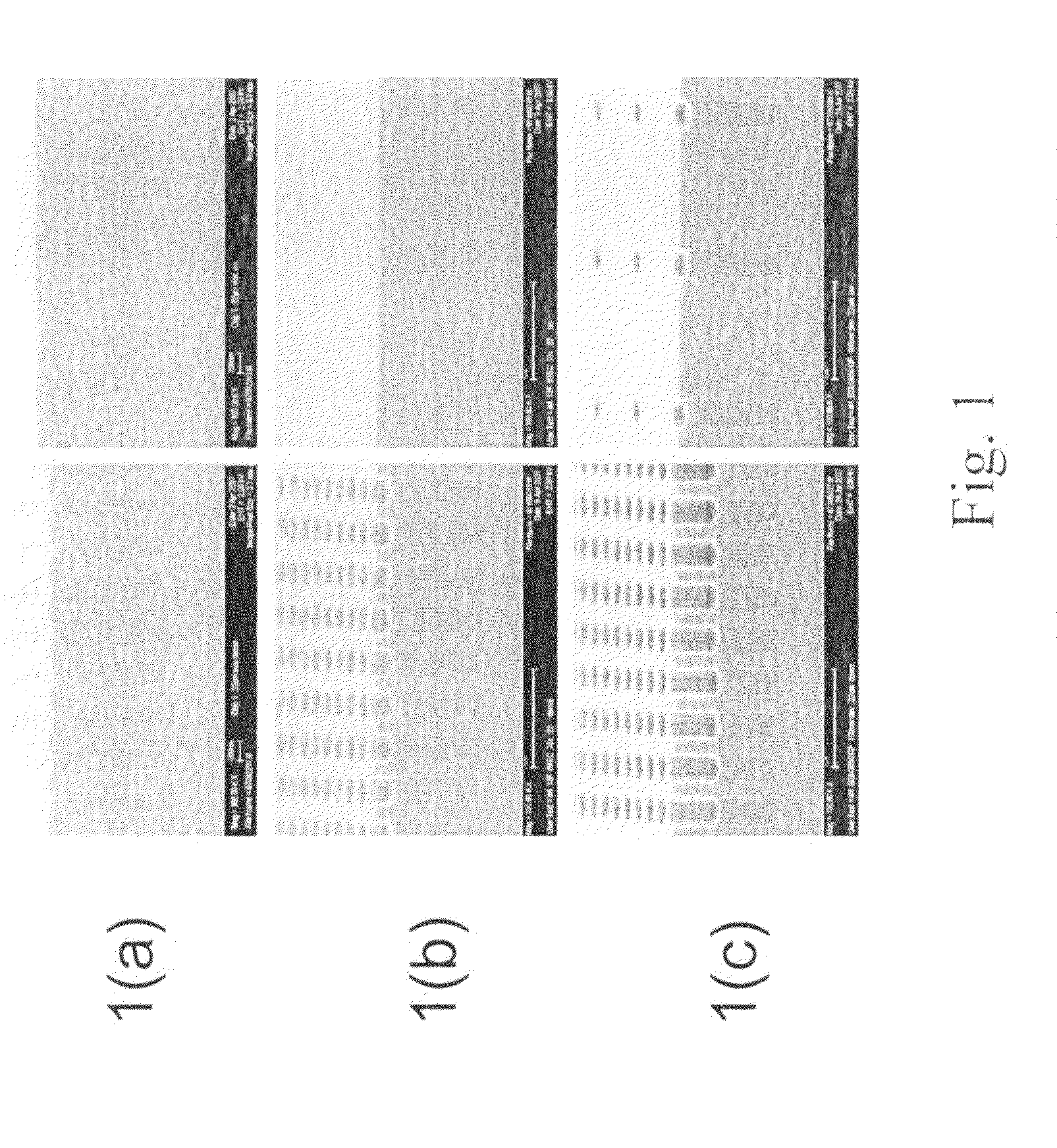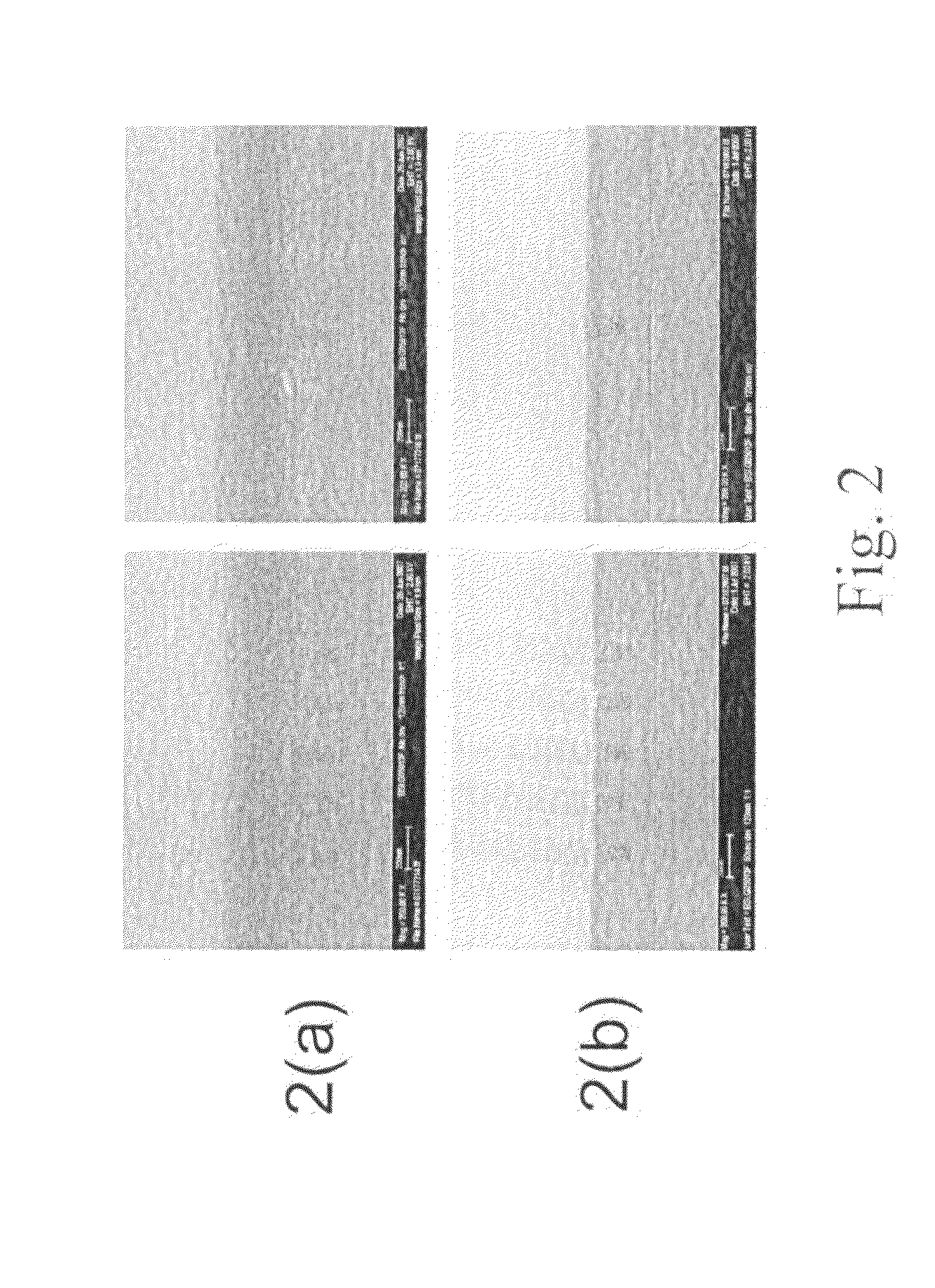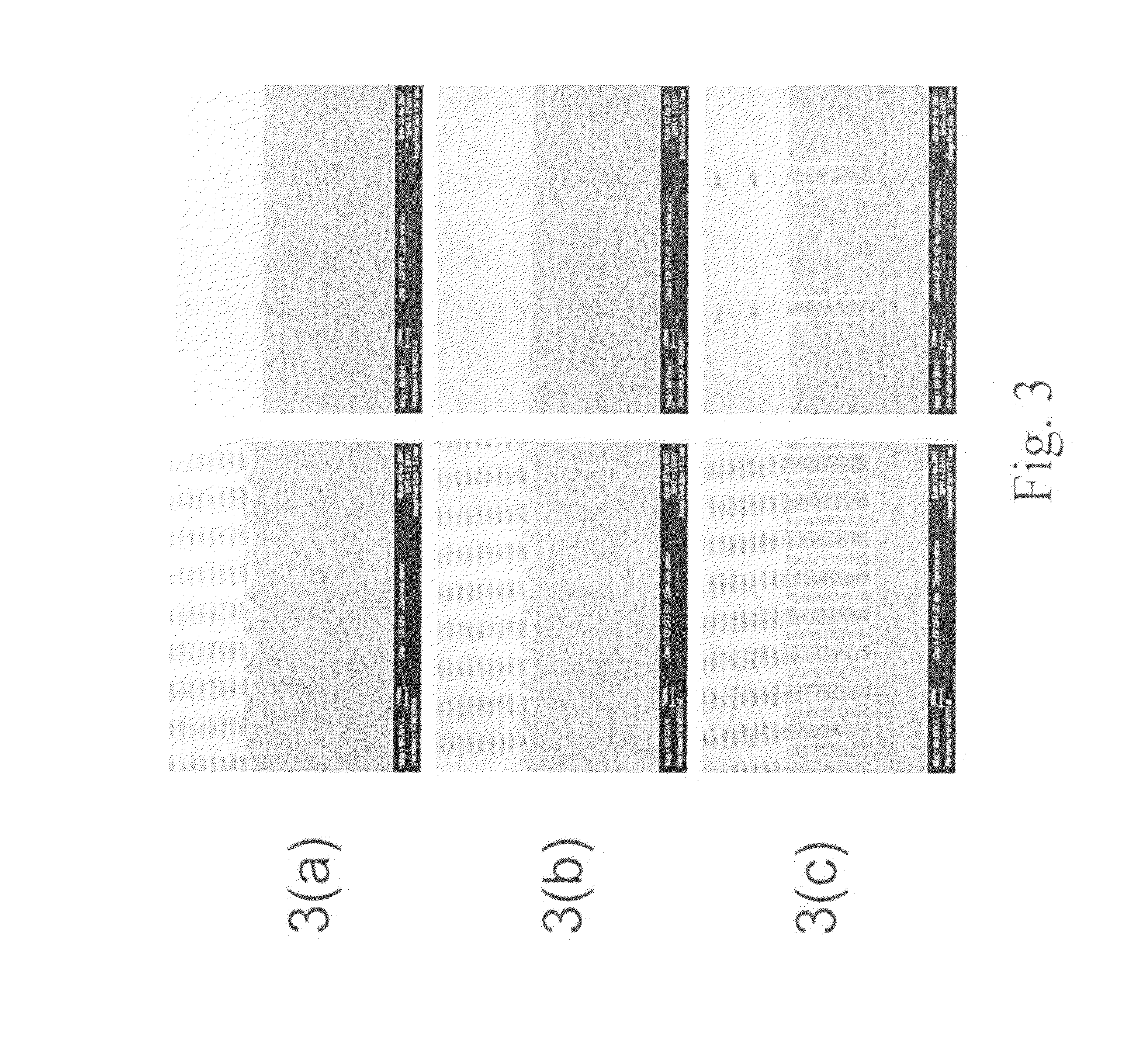Non-covalently crosslinkable materials for photolithography processes
- Summary
- Abstract
- Description
- Claims
- Application Information
AI Technical Summary
Benefits of technology
Problems solved by technology
Method used
Image
Examples
example 1
Preparation of Compositions for Development Rate Control by Varying Monomer Ratios
1. Preparation of Copolymers
[0068]Polymer mother liquors were prepared by adding 4-vinylpyridine (“4-VPY,” obtained from Sigma-Aldrich Co.), tert-butyl 4-vinylphenyl carbonate (“TBSM,” obtained from DuPont), propylene glycol monomethyl ether (“PGME,” obtained from Harcross Corp.), and 2,2′-azobis(2-methylpropionitrile) radical initiator (“AIBN,” obtained from Sigma-Aldrich Co.) to a 100-ml round bottom flask. The flask was sealed and purged with nitrogen, and the mixture was stirred until the TBSM and AIBN were in solution.
[0069]Five different polymer mother liquors were prepared with varying monomer concentrations. The ingredients for each mother liquor are provided in Table 1 below.
TABLE 1Polymer Mother4-VPYTBSMPGMEAIBNLiquor(g)(g)(g)(g)1A1.266.1766.870.331B1.685.2962.730.331C2.104.4058.500.331D2.523.5254.360.331E2.942.6450.220.33
[0070]After the reagents were in solution, the mixture was heated in a ...
example 2
Preparation of Compositions for Develop Rate Control by Addition of a Bond-Disrupting Agent
1. Preparation of Composition
[0074]In this example, the polymer mother liquor 1C from Example 1 above was used to prepare the inventive compositions. Various formulations were prepared by blending the polymer mother liquor and PnP, with increasing amounts of acid as the bond-disrupting agent. The ingredients and amounts for each formulation are listed in Table 4 below, with the percentages by weight being based upon the total amount of all ingredients in the composition take as 100% by weight. Each of the five formulations was prepared three times using three different acids (i.e., bond-disrupting agents): pTSA, methane sulfonic acid (“MSA,” Sigma-Aldrich Co.), and camphor sulfonic acid (“CSA,” Sigma-Aldrich Co.), for a total of 15 compositions.
TABLE 4PolymerBond-disruptingMotherFormulationagentALiquor (1C)PnP2A0.04%20.0%79.94%2B0.08%20.0%79.92%2C0.12%20.0%79.88%2D0.16%20.0%79.84%2E0.20%20.0%7...
example 3
Preparation of Gap Fill Composition
1. Preparation of Copolymers
[0076]To prepare the polymer mother liquor, 14.01 grams of 4-VPY, 29.28 grams of TBSM, 105 grams of PGME, and 1.75 grams of AIBN were added to a 500-ml round bottom flask. The flask was sealed and purged with nitrogen, and the mixture was stirred until the TBSM and AIBN were in solution. The mixture was then heated in a silicone oil bath and allowed to react at 75° C. for 16 hours. After 16 hours, the polymer solution was cooled to room temperature and bottled. The solution had 30% solids.
2. Composition Preparation
[0077]The gap fill composition was prepared by mixing 6.40 grams of the polymer solution prepared above (1.92 grams of polymer solids and 4.48 grams of PGME) with 7.53 grams of PGME, 6.00 grams of propylene glycol methyl ether acetate (PGMEA), and 0.078 grams of pTSA. The composition mixture had a total weight of 20.01 grams, with 10% solids.
3. Gap Filling with Composition
[0078]The composition was spin-coated a...
PUM
| Property | Measurement | Unit |
|---|---|---|
| Fraction | aaaaa | aaaaa |
| Thickness | aaaaa | aaaaa |
| Thickness | aaaaa | aaaaa |
Abstract
Description
Claims
Application Information
 Login to View More
Login to View More - R&D
- Intellectual Property
- Life Sciences
- Materials
- Tech Scout
- Unparalleled Data Quality
- Higher Quality Content
- 60% Fewer Hallucinations
Browse by: Latest US Patents, China's latest patents, Technical Efficacy Thesaurus, Application Domain, Technology Topic, Popular Technical Reports.
© 2025 PatSnap. All rights reserved.Legal|Privacy policy|Modern Slavery Act Transparency Statement|Sitemap|About US| Contact US: help@patsnap.com



